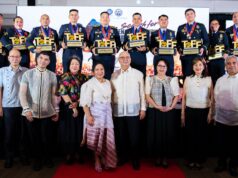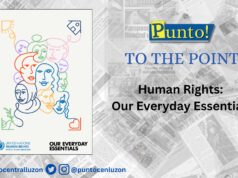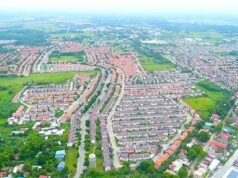I spent a week with my family in the province of Cotabato and have updated myself on what has been happening since my last visit there.
Sometime in August classes were suspended in Midsayap because of the increasing presence of the Moro Islamic Liberation Front in the area. While majority of the town’s people are Christians, there is a significant Muslim population in the area and some of its barangays have been identified for inclusion in the Autonomous Region for Muslim Mindanao in the controversial memorandum of agreement between the GRP and MILF panels. This MOA in question has been deemed unconstitutional and it seeks to create, in essence, a separate state to be led by a Bangsamoro Juridical Entity that seeks to unite all indigenous peoples of Mindanao, apart from the Muslims. In effect, the MOA also stipulated the expansion of the present territory covered by the ARMM by including more towns and even barangays in the provinces of Cotabato and Sarangani.
In spite of the continuing precarious peace and order situation in that part of the country, I felt safe to be back in Cotabato. Seemingly simple bucolic life goes on. The price of goods in the market remains cheaper compared to what I am used to in Pampanga. The farm where my dad stays looks idyllic, a mere stone’s throw away from the pebbly river whose water is clean enough to bathe in or even drink. There are but few indications to remind me that the area is ‘war-torn’. But at the back of my head was a gnawing thought that this might be what it is like in the eye of the storm.
Early mornings I wake up hearing the buzz of air force choppers. At breakfast my sister asks if I heard the distant sound of cannons being fired during the night. The kids wake up to the siren calls emanating from the municipal hall almost every hour.
While driving along the main street, our driver kuya Allan reminds me not to open the car windows lest grenades will be thrown at us. I asked if there had been any reported cases of private cars being bombed in the past few months. He answered that there have not been any but we could not risk being the first. Besides the local government remains vigilant in warning the people on the possibility of attacks that may appear terroristic in nature so extra precaution is called for at all times.
On the way to Davao City, a stretch of about 180 kilometers, we get stopped by military and police checkpoints five or six times, not counting the other designated checkpoints manned by lax personnel who don’t bother to stop vehicles. Other than that I enjoyed the view and recalled the various stops we used to make on similar road trips in the past: kiddie meals at Jollibee in Kidapawan City, buying choco-flavored goat’s milk at a pretty road side place and getting rambutan in the town of Makilala. Furniture, pottery, wood crafts and harvests dot the national highway that leads to Davao. Further, pretty much of what we pass along the road is nature that remains unspoiled but is threatened by war. When I see the rolling hills of green and lush vegetation I remember why Mindanao holds a lot of promise.
However, the bodies of water that could be developed for water sports or the marsh lands that could be bird watching destinations are the same hiding places for rebel groups being hunted by the military. Whenever I spot a potential eco-tourism spot my brother-in-law would laugh at me and remind me that the locals will not dare venture in such territories for purposes of enjoying the sights because of the peace and order situation.
My nephew Buboy, who is a varsity basketball player at the local Notre Dame, told me about the sports camp he joined that was organized by the Philippine Sports Commission. Dubbed “Sports for Peace” the activity brings together young athletes from the war-torn areas of Mindanao through clinics in basketball, volleyball and other team sports as an alternative to intercultural dialogues for peace. I asked him if he has any Muslim friends and he told me that he gets along quite well with them, which I think is good for him. I believe that building a culture of peace really starts in the young.
At the end of the day while I dread the thought of a perennially war-torn Mindanao, I continue to hope and pray that the promise of peace will be fulfilled in the land of promise.




